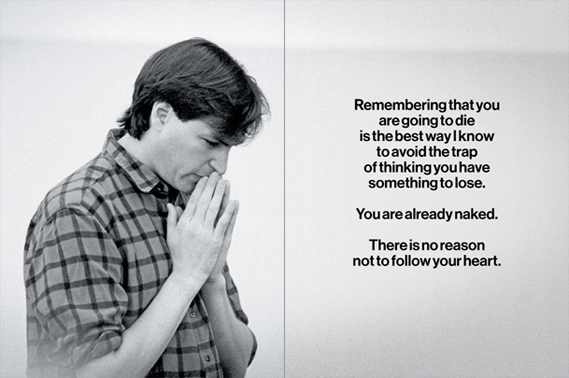பண்ணையாரும் பத்மினியும் - இனிமையான பயணம்
மிக அரிதாகவே ஒரு கதாநாயக நடிகரின் அடுத்தடுத்த படங்கள் ஒரு வார இடைவெளிக்குள் வெளியாகும். அப்படியொரு அரிதான நிகழ்வாக ரம்மி வெளியான எட்டாவது நாள் பண்ணையாரும் பத்மினியும் வெளியாகியிருக்கிறது., இடையில் இருந்த ஒரு வார இடைவெளியில் இந்தப் படம் விஜய் சேதுபதியின் எதிர்காலத்தை தீர்மானிக்கப் போகிறது என்று ஊடகங்கள் கட்டியம் கூற ஆரம்பித்தன. ரம்மியின் தோல்வியே இதற்குக் காரணம்.
ஒரு நடிகரின் எதிர்காலத்தை ஒரே ஒரு படத்தின் வெற்றி அல்லது தோல்வியை வைத்து தீர்மானிக்க முடியாது என்றாலும் பண்ணையாரும் பத்மினியும் படத்தின் வெற்றி விஜய் சேதுபதிக்கும் அவரது ரசிகர்களுக்கும் ஊக்க மருந்தாக அமையக்கூடியதுதான்.
அறிமுக இயக்குநர் எஸ்.அருண்குமார் இயக்கியிருக்கும் இந்தப் படம் அந்த ஊக்க மருந்தைக் கொடுத்திருக்கிறதா?
பண்ணையார் (ஜெயபிரகாஷ்,) ஊருக்கு நல்லது செய்யும் உத்தமர். வானொலி, தொலைக்காட்சி, தொலைபேசி என அனைத்து விஞ்ஞான கண்டுபிடிப்புகளையும் தன் கிராமத்துக்கும்.அறிமுகப்படுத்தி மக்களின் பயன்பாட்டுக்கு விட்டுவிடுபவர். அவரது தயாள குணத்துக்கு அவரது மனைவியும் (துளசி) துணையாக இருக்கிறார்.
நண்பர் ஒருவர் தனது ப்ரீமியர் பத்மினி என்ற பழைய மாடல் காரை பண்ணையாரின் வீட்டில் விட்டுவிட்டு வெளியூர் செல்கிறார். பண்ணையாருக்கும்,அவரது மனைவிக்கும் அந்த காரை ஓட்டுவதற்காக நியமிக்கப்படும் பண்ணையாரின் விசுவாசி முருகேசனுக்கும் (விஜய் சேதுபதி) மட்டுமல்லாமல் அந்த கிராமத்தில் உள்ள அனைவருக்கும் செல்லக் குழந்தையாகிவிடுகிறது அந்தக் கார். நண்பர் கேட்டால் காரைத் திருப்பித் தர வேண்டும், என்ற உண்மையை யாராலும் யோசித்துக் கூட பார்க்க முடியவில்லை. இவற்றுக்கிடையில் தன் மனைவியை மகிழிவிக்க, முருகேசனிடம் கார் ஓட்டக் கற்றுக்கொள்கிறார் பண்ணையார். காரை வைத்துக்கொள்வது மட்டுமல்லாமல் அதை ஓட்டுவதும் பண்ணையாரின் கனவாகிறது.
ஒரு வழியாக கார் பண்ணையாருக்கே சொந்தமாக கிடைத்துவிட காரை அவரிடமிருந்து பிரிக்கும் வேறு சில பிரச்சினைகள் ஏற்படுகின்றன. முருகேசனுக்கும் மலர் (ஐஸ்வர்யா ராஜேஷ்) என்ற பெண்ணுக்கும் இருக்கும் காதல் அதற்கு மறைமுகக் காரணமாகிறது.
பண்ணையாரின் காருக்கும் முருகேசனின் காதலுக்கும் என்ன ஆகின்றன என்பதே மீதிக் கதை.
”பொருட்கள் பயன்படுத்தப்பட வேண்டியவை. மனிதர்கள் விரும்பப்பட வேண்டியவர்கள். ஆனால் நாம் பொருட்களை விரும்புகிறோம். மனிதர்களைப் பயன்படுத்திக்கொள்கிறோம்”- இன்றைய மனித குல யதார்த்தமாக மாறிவிட்ட இந்த நகைமுரண் குறித்த சுயவிமர்சனக் கருத்தாக இது முன்வைக்கப்படுவதுண்டு. ஆனால் இது போன்ற தத்துவ விசாரணைகளுக்கப்பால், தாம் வைத்திருக்கும் ஏதேனும் ஒரு பொருள் மீது மனிதர்கள் தெரிந்தோ தெரியாமலோ தீராத பிடிப்பைக் கொண்டுவிடுகின்றனர். உயிரற்ற பொருட்களின் மீது விருப்பம் கொண்டவர்கள், தன்னைச் சுற்றியிருக்கும் மனிதர்கள் மீது அன்பு செலுத்தமாட்டார்கள் என்ற பொதுவான நம்பிக்கைக்கு விதிவிலக்குகளாகவும் பலர் இருக்கின்றனர். இதுவே பண்ணையாரும் பத்மினியும் படத்தின் மையக் கரு.
பொருட்களை அவற்றின் பயன்பாட்டிற்காக வைத்திருப்பவர்களும் ஜடப் பொருட்களை நேசிப்பவர்களை விமர்சிப்பவர்களும்கூட புரிந்துகொண்டு ஏற்றுக்கொள்ளும் விதத்தில் இந்தக் கதையைப் படைத்திருப்பதில் வெற்றிக்கொடிநாட்டுகிறார் அருண்குமார்.
படத்தின் மற்றொரு இழை, 50 வயதைக் கடந்துவிட்ட தம்பதியினருக்குள் இருக்கும் போட்டி மனப்பான்மை. விமர்சனப் நோக்கு, எள்ளல் இவற்றுக்கெல்லாம் மேலாக ஒருவருக்கு மற்றவர் மீது இருக்கும் அன்பு மற்றும் அன்னியோன்யம் அதை வெளிப்படையாக் காண்பிப்பதில் உள்ள வெட்கம் ஆகியவற்றை அழகாகப் படம்பிடித்துக் காட்டியிருக்கிறது. தமிழ் சினிமாவில் இதுவரை ஒரு சிறிய அளவிலான சுவாரஸயத்தை ஏற்படுத்த மட்டுமே பயன்படுத்தப்பட்ட வயது முதிந்தவர்களின் காதல் இந்தப் படத்தில் ஆழமாகவும் இயல்பை விட்டு விலகாமலும் காட்சிப்படுத்தப்பட்டிருக்கிறது.
கிளைக் கதைதான் என்றாலும் முருகேசனுக்கும் மலருக்கும் இடையிலான காதல் கதை கிராமத்துத் தென்றல் முகத்தை வருடிச் செல்லும் உணர்வைத் தருகிறது. மலர் தன் வீட்டில் ஏற்பட்ட மரணத்துக்காக அழுதுகொண்டிருக்கும்போது முருகேசனுக்கு அவர் மீது காதல் அரும்புவதாகக் காட்டியிருப்பது கூடுதல் சுவாரஸ்யம்.
பண்ணையார் உட்பட அனைவருக்கும் இருக்கும் கார் மீது இருக்கும் பிடிப்பு படத்தில் உணர்ச்சிப் பூர்வமான காட்சிகளுக்கும் இடம்கொடுக்கிறது. அந்தக் காட்சிகள் அளவான உணர்ச்சிகளுடன் இயலபாகப் பதிவுசெய்யப்பட்டிருக்கின்றன. கார் மீதான பாசம் மட்டுமல்லாமல் கணவன் மனைவிக்குள்ளான அன்பும் உணர்ச்சிமயக் காட்சிகளின் வலிமையை அதிகரிக்கின்றன.
படம் நெடுக கதையுடன் இழையோடும் நகைச்சுவைக்கும் பஞ்சமில்லை.
பண்ணையார் உட்கார்ந்திருக்கும் விதத்தைப் பார்த்து அவர் இறந்துவிட்டதாக நினைத்துக்கொண்டு வேலைக்காரன் அழுவது. நண்பருக்கு உடல் நிலை சரியில்லை என்று கேள்விப்பட்டதும் அதற்காக வருந்தாமல் கார் நம்முடன் இருக்கப்போகிறதே என்ற சந்தோஷமே பண்ணையார் மற்றும் முருகேசனின் இயல்பான வெளிப்பாடாக இருப்பது ஆகியவற்றை இதற்கு உதாரணமாகச் சொல்லலாம்.
நலம் விசாரிக்கும் வார்த்தைகளால் மற்றவர்களுக்கு துர்திருஷ்டத்தைக் கொண்டுவரும் பாத்திரமாகப் படைக்கப்பட்டிருக்கும் பண்ணையாரின் வேலைக்காரன் பீடை(பாலா சரவணன்) செய்யும் நகைச்சுவைகள் கதையோடு அழகாக ஒட்டவைக்கப்பட்டுள்ளன.
இத்தனை நிறைகள் இருக்கும் இந்தப் படத்தில் கதையை நகர்த்திச் செல்வதற்கான கட்டாயத் தேவையான முரண் வலுவாக உருவாக்கபடவில்லை என்பதே ஆகப் பெரிய குறை. கார் மீதான அன்பையும் அதன் உரிமைக்கு விளையும் தடங்கல்களையும் இரண்டரை மணி நேரப் படமாக நீட்டிக்க மெனக்கெட்டிருப்பது அப்பட்டமாகத் தெரிகிறது. பிறந்த வீட்டிலிருந்து எல்லாவற்றையும் எடுத்துச் செல்லும் மகள் பாத்திரம் (நீலிமா ராணி), முருகேசனுக்கு உள்ளூர் பேருந்து மீது இருக்கும் வெறுப்பு ஆகியவை கதையை நீட்டிப்பதற்காகத் திணிக்கப்பட்டிருப்பவையாகத் தோன்றுகின்றன. பண்ணையாரின் கார் ஓட்டக் கற்றுக்கொள்ளும் வேட்கையும் ஒரு கட்டம் வரை கதையுடன் பொருந்தினாலும், அதற்கு மேல் நீளத்தைக் கருத்தில்கொண்டு வைக்கப்பட்டதாகவே தோன்றுகிறது.
அன்பின் மனித வடிவங்களாக, வயது முதிர்ந்த காதலர்களாக ஜெயபிரகாஷும் துளசியும் இதுபோன்ற தம்பதிகளை நிஜத்தில் தேட வேண்டிய ஆசையை ஏற்படுத்துகிறார்கள். வெள்ளந்தி மனிதராக ஜெயபிரகாஷும் கணவனைக் கண்டிப்புடன் கூடிய அன்பால் வெல்லும் மனைவியாக துளசியும் குறையற்ற நடிப்பை வழங்கியிருக்கிறார்கள்.
இந்தப் படத்திலும் கிட்டத்தட்ட துணைப் பாத்திரம்தான் விஜய் சேதுபதிக்கு,. ஆனால் கதையில் முக்கியப் பங்காற்றும் பாத்திரம். படம் நெடுக வருகிறார். அவரது காதல் கதையும் மையக் கதையுடன் அழகாக இணைககப்பட்டிருக்கிறது. இப்படி ஒரு பாத்திரத்தை ஏற்று அதில் சிறப்பாக நடித்திருப்பதன் மூலம் கதையையும் பாத்திரத்தைய்ம் தவிர வேறெதைப் பற்றியும் கவலைப்படாத நடிகர் என்று தனக்கிருக்கும் நற்பெயரை மீண்டும் உறுதி செய்கிறார் விஜய் சேதுபதி.
ஐஸ்வர்யா ராஜேஷ் கிராமத்துப் பெண் வேடத்துக்கு சிறப்பாகப் பொருந்தினாலும் நடிப்பதற்குப் பெரிய வாய்ப்பில்லை. பாலா சரவணன் பல இடங்களில் வெடித்துச் சிரிக்க வைக்கிறார். நகைச்சுவை நடிப்பில் இவருக்கு வளமான எதிர்காலம் இருக்கிறது என்ற நம்பிக்கையை ஏற்படுத்துகிறார். நீலிமா ராணி, பாத்திரம் கோரும் நடிப்பை வழங்கி பாஸ் மார்க் வாங்குகிறார்.
தோன்றுவது ஒரு காட்சியில்தான் என்றாலும் தன் அழுத்தமான முத்திரையை பதித்துவிட்டுச் செல்கிறார் சிநேகா. மற்றொரு கவுரவத் தோற்றத்தில் நடித்திருக்கும், அட்டக்கத்தி தினேஷுக்கு கிட்டத்தட்ட வசனமே இல்லை. ஆனால் பொருத்தமான முகபாவங்களாலேயே மனதைக் கவர்கிறார்.
ஜஸ்டின் பிரபாகரனின் இசையில் பாடல்கள் கேட்பதற்கு இதமாக இருக்கின்றன. பின்னணி இசையும் பொருத்தமாக இருக்கிறது. துளிகூட இரைச்சல் இல்லை.
கோகுல் பினாயின் ஒளிப்பதிவு 1990களின் கிராமத்தை அதன் இயல்புடன் பதிவுசெய்திருக்கிறது.
படத்தை பெரிய அளவில் தொய்வில்லாமல் நகர்த்திச் செல்வதில் படத்தொகுப்பாளர் ஸ்ரீகர் பிரசாத்தின் பங்கு பாராட்டத்தக்கது.
வலுவான கதை இல்லைதான். அதற்காக அன்பைக் கொண்டாடும் இந்த அழகான படத்தை தவறவிட்டுவிடாதீர்கள்.

